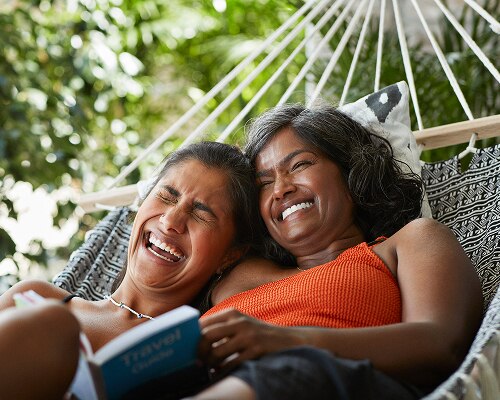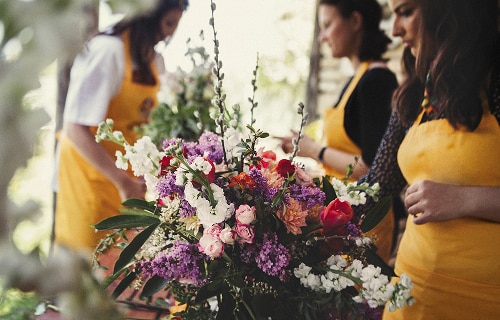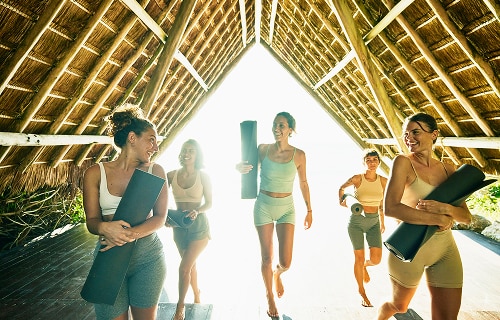
Discover a collection of stories from our authorities on the Longevity Lifestyle, created by ROAR Forward, a collaborative of longevity thought leaders and content creators.
Spas, wellness retreats, healing centers—they’ve been around since ancient times. But their
appeal—and programming—has never been so multifaceted. Beyond treatments and yoga sessions, wellness vacations offer pursuits such as equine experiences, challenge courses, mindful labyrinths, meditation, nutrition programs and life-long learning. It’s that combination of physical and mental activities that make them an optimal choice for enhancing longevity.
The holistic experience of living well deep into a third act is dependent on a variety of factors, including many found at these types of getaways, explains Barbara Waxman, coach, lifestage expert, author and founder of The Odyssey Group, a longevity and leadership consultancy.
“The difference between a retreat and a vacation is that you are feeding the whole self.”
Here’s how some of the core elements of a retreat can enhance your life well after your vacation ends.

Developing Community
At a wellness retreat: “Community is a big draw to retreats,” says Waxman, with opportunities to gather at group activities, creative classes, guided meditation sessions, and even meals. These getaways are also the perfect place to discover like-minded people on a similar journey of self-discovery and improvement. “I advise people to go with one friend or alone; this way you can take off your armor, truly engage and be present,” Waxman adds.
At home: Gathering together has been shown to reduce symptoms of depression, anxiety, and other stressors. A core component of being in community, notes Waxman, is “contributing and thinking beyond the self.” Indeed, some studies cite a 50% increase in quality of life; others concluded a 24% bump in life expectancy when friends are in contact consistently.
Healthful menus
At a wellness retreat: Heavy on the flavor and balanced on the portions, wellness retreat meals likely incorporate all the good-for-you foods while also incorporating the hari hachi bu approach to eating. Studied in the Blue Zones, this practice includes giving thanks for one’s meal and eating until 80% full. The portion sizes at many wellness retreats allow guests to experience hari hachi bu, says Waxman.
At home: When you return, Waxman advises to never eat on the run, as the mindful experience of sitting down to savor your meal will allow you to actually understand when you are full and allow you to stop when you’re about 80% there.

Classes in Creativity
At a wellness retreat: Retreats often boast lifelong learning programming like photography classes, mandala painting, and floral arranging. Exploring these kinds of creative pursuits in what Waxman calls “middlescence”—the life stage that is post-child rearing, working full-time, and administering elder care—is a key to longevity. It’s a time when bodies, hormones, and perspective are undergoing great change, making it the ideal opportunity for “unearthing old interests and discovering new ones,” says Waxman.
At home: What moves you? Is there a hobby you abandoned—painting, singing, woodworking—when kids/career/life got in the way? This is the time to revisit those interests. “Lifelong learning [hobbies and art classes, experiences and travel, and the exposure to cultural events] feeds you in a different way,” notes Waxman.
Meditation Practices
At a wellness retreat: Mediation is mindfulness, the practice of being in the moment. Along with sessions in guided mediation, sound baths, and more, some spa programs offer equine programs, which have been linked to emotional regulation and self-esteem, as well as labyrinths (mazes created from stones) which are considered active meditation. In addition, many wellness retreats are tech-free in order to enhance the effects of being mindful without distractions.
At home: Mindfulness can look differently for different people. “I have a client who loves coffee and he takes a long time to brew it, that is meditative for him,” says Waxman. What’s important is to embrace whatever you’re doing slowly and tech-free. Even a walk outdoors can do the trick—just 15 minutes in a quiet, “green” urban district—can do wonders.
Body Movement
At a wellness retreat: Since their inception, wellness retreats have centered around fitness programming. Today’s destination spas offer a wealth of activities from traditional forms like aerobics and yoga to more surprising workouts like fencing, ropes courses, and TRX training. Many offer personalized plans, 1:1 training and the opportunity to try the next-big thing in fitness.
At home: Physical wellness is a non-negotiable. Agility and strength are paramount for mobility and overall wellness. “We need to train for stability, balance, flexibility, strength, and to prevent injury.” If you’re really looking to shake it up, incorporate vibration plates; one study found a slight increase in bone density in women who used the plates for 15 minutes a week.
Explore more longevity lifestyle stories here.
